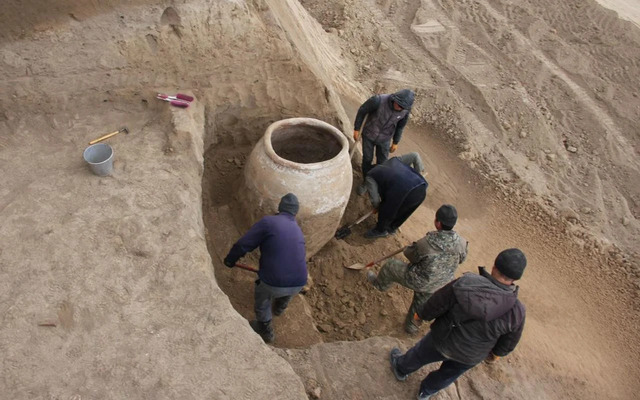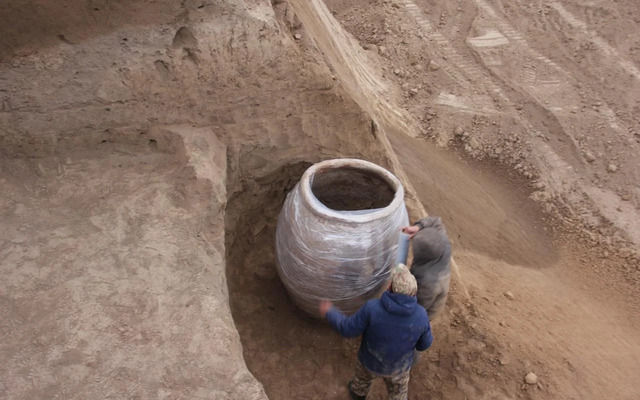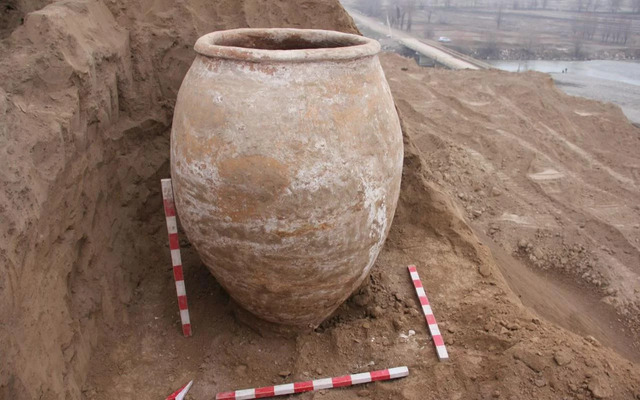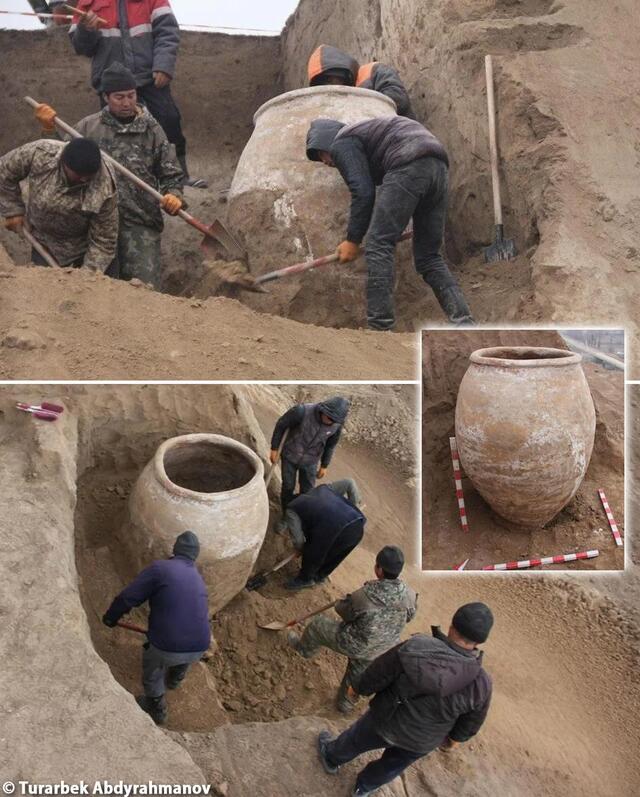The discovery of a towering clay vessel, known as a “hum,” in Kyrgyzstan’s Uzgen district has unveiled a significant chapter of ancient history. Dating back to the 7th to 4th centuries BCE, this 1.75-meter artifact offers new insights into the Shoro-Bashat culture. Unearthed just days into an excavation, the find highlights the region’s rich archaeological potential while balancing heritage preservation with modern development efforts.
The Hum: An Ancient Vessel Unearthed
The centerpiece of this discovery is a hum, an imposing clay vessel standing 1.75 meters tall. Crafted with remarkable precision, the vessel underscores the advanced skills of the Shoro-Bashat culture, a civilization that flourished in Central Asia. Its immense size and detailed craftsmanship suggest that it likely served a significant purpose, possibly for storage of grains, liquids, or other vital resources.

Mars Boranbaev, leading the excavation team under the National Academy of Sciences of the Kyrgyz Republic, has emphasized the vessel’s importance. Early analyses indicate that the hum could provide valuable insights into the daily lives and practices of this ancient community. Fragments of other pottery found alongside it also hint at a thriving, well-organized society that valued artistic and practical craftsmanship.
The Excavation Process
The excavation began only days before the remarkable discovery, spurred by archaeological activities near the Kyzyl-Oktiabr area. Within five to six days of digging, the team uncovered the hum buried deep beneath the soil. The process required meticulous effort, as the archaeologists carefully removed layers of earth to prevent damage to the fragile artifact.
The discovery site posed several challenges due to its proximity to modern construction projects, including the ongoing development of the Uzgen bypass road. Despite these obstacles, the archaeologists successfully unearthed the hum, preserving its structural integrity for further study.

Insights into the Shoro-Bashat Culture
The hum is a vital piece of the puzzle in understanding the Shoro-Bashat culture, which thrived in the region over 2,000 years ago. Alongside the vessel, the team uncovered fragments of clay pottery that are characteristic of this civilization. These findings suggest that the hum was part of a broader network of trade and storage, reflecting the community’s resource management strategies.
The Shoro-Bashat culture is known for its sophisticated pottery and architectural techniques. The hum’s size and design point to its likely use in communal storage or ceremonial practices. Its discovery offers archaeologists a rare opportunity to delve deeper into the socio-economic structures of this ancient society.


The Significance of Uzgen District
The Uzgen district has long been recognized as a historical treasure trove. Its strategic location near ancient trade routes made it a hub of cultural exchange and economic activity. The latest discovery further cements its status as a key site for understanding Central Asian history.
Located near the Kyzyl-Oktiabr area, the district has been the focus of increased archaeological activity. The bustling environment of the old city provides a fertile ground for uncovering relics of the past. This discovery of the hum adds another layer to the district’s rich narrative, bridging the gap between ancient traditions and modern development.
Modern Development and Heritage Preservation
While the hum’s discovery is a milestone for archaeology, it also highlights the delicate balance between preserving historical sites and advancing modern infrastructure. The excavation coincided with the construction of the Uzgen bypass road, a project valued at 2.6 billion soms. Designed to alleviate traffic congestion, the road represents a significant step in the region’s development.
However, the archaeological team has worked diligently to ensure that the hum and other artifacts are preserved. By integrating heritage preservation into the construction project, they have demonstrated how modern development can coexist with efforts to safeguard the past. This approach serves as a model for future projects in historically rich areas.
Future Prospects
The discovery of the hum is only the beginning of what promises to be an exciting chapter in Kyrgyzstan’s archaeological exploration. Further studies will focus on analyzing the vessel’s composition, usage, and cultural significance. Researchers also hope to uncover more artifacts in the surrounding area, potentially revealing additional details about the Shoro-Bashat culture.
The hum’s preservation is a top priority, with plans to display it in a regional museum. This will not only protect the artifact but also allow the public to engage with their heritage, fostering a deeper appreciation for Kyrgyzstan’s rich history.
Conclusion
The unearthing of the hum in Uzgen is a testament to the enduring legacy of the Shoro-Bashat culture and the meticulous work of modern archaeologists. This towering clay vessel serves as a bridge between past and present, offering invaluable insights into the lives of ancient communities while coexisting with the region’s ongoing development. As studies continue, the hum stands as a symbol of the harmony between preserving history and embracing progress—a reminder that the past, when protected, enriches our understanding of the present and future.
